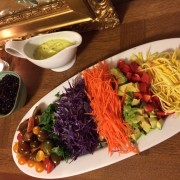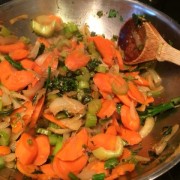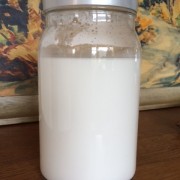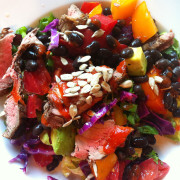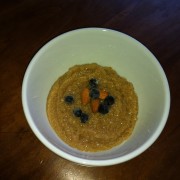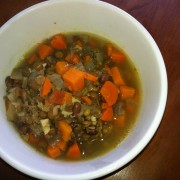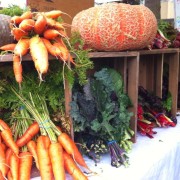Yumm Bowl
I was asked by a mother-daughter group in Gig Harbor, Washington to teach a class on healthy meals that lend to the bonding experience our kitchens can provide between parent and child. I was more than excited for this class because of my strong belief in creating deeper relationships with our loved ones through richly nourishing meals. I grew up in a home where we worked as a family to create these foundations of our health. What better gift than to teach our children how to prepare real food. Because of my parents commitment to whole food and healthy living, I now enjoy the making of my families memories while preparing our delicious traditions in the kitchen.
I created my own version of this Yumm Bowl from a recipe that was introduced to me by my Tante (aunt in German and Swiss) Meg. Like I do with most recipes that inspire me, I modified this one to tailor to my families food sensitivities and to add even more colorful nutrients. This recipe is perfect for families as children tend to have different taste buds that can be fickle from one day to the next! With so many vegetables to choose from, our little ones can choose their favorites for this meal. Have your children appreciate the rainbow of colors in this dish and realize that the color of the vegetables is where the rich nutrients come from, which allows our bodies to have a healthy immune system. I went to my local farmers market to pick up all the delicious ingredients. Be flexible with this recipe to make it your own, such as using vegetables that are in season. Have fun and enjoy!
Servings: 4-6
Yumm Sauce:
1/2 cup water
1/2 cup fresh lemon juice
1/2 cup grape seed, canola or extra virgin olive oil
1/2 cup almond meal or finely chopped almonds (sunflower or pumpkin seeds are fine here for nut allergy replacers)
1/3 cup nutritional yeast
1 cup cooked garbanzo beans
2 cloves garlic
1/2 teaspoon sea salt
1 1/2 teaspoon curry powder
1 teaspoon dried oregano
1 teaspoon dried cilantro
Yumm Bowl:
4 cups brown rice, cooked
2 cups black beans, cooked
1 cup, diced fresh tomato
1/4 medium purple cabbage, thinly sliced
1 avocado, pit removed and thinly sliced
1 bell pepper, stem and seeds removed and chopped
1 medium yellow squash or zucchini, ends removed and grated
2 medium carrots, peeled then grated
1/4 cup fresh cilantro, chopped
1 can black olives, sliced
Directions For The Yumm Sauce:
- Combine the water and lemon juice in a small bowl and set aside. Measure out the oil and set aside.
- In a food processor or high powered blender, blend the almonds, nutritional yeast, garbanzo beans, garlic, salt, curry, oregano, and cilantro until almost fully ground.
- While still blending, add the lemon juice and water mixture. Next, slowly add the olive oil and blend until smooth.
- Transfer the sauce to a jar or gravy mote for serving.
Yumm Bowl Preparation:
- In an individual serving bowl, scoop some brown rice and place black beans on top. Drizzle desired amount of Yumm sauce over the beans and rice.
- Next add the remaining vegetables and cilantro to garnish to your taste.
Enjoy!

